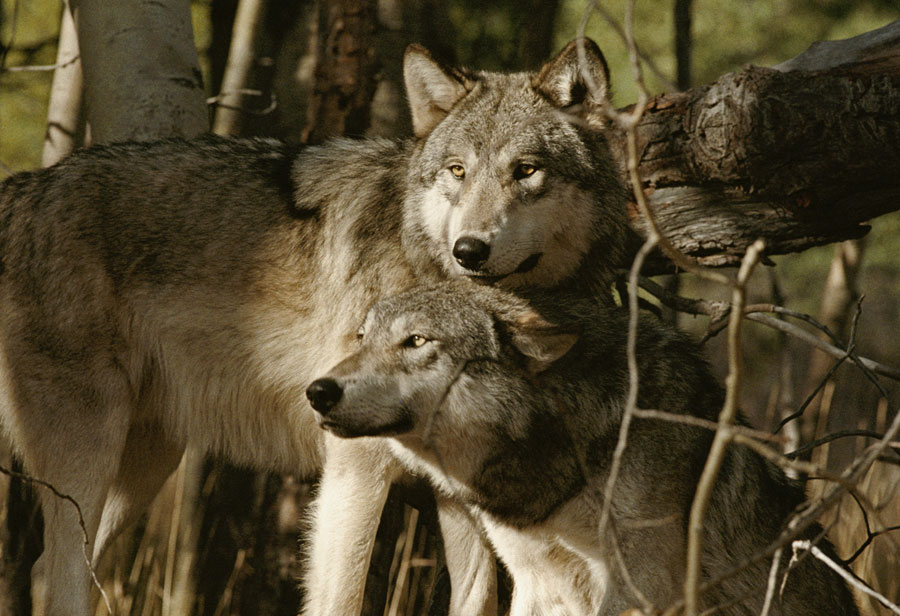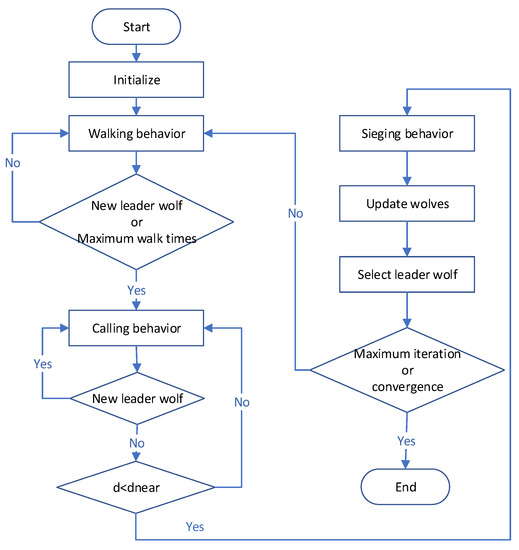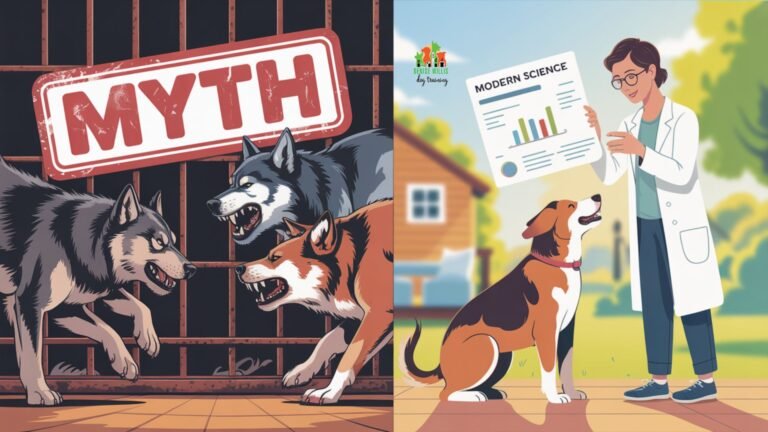Visualizing Pack Dynamics: How Alpha Females Shape Wolf Communication Networks
Discover the intricate world of wolf pack communication through the lens of the alpha female's influence, revealing complex social structures that maintain pack cohesion and survival.
The Alpha Female's Position in Wolf Pack Hierarchy
When I first began studying wolf packs, I was immediately fascinated by the complex social dynamics that govern their interactions. At the heart of every successful wolf pack stands not just an alpha male, but an equally powerful alpha female. Together, they form the breeding pair that guides the pack's survival and shapes its communication networks.

The traditional view of wolf pack structure has evolved significantly over recent decades. While earlier research emphasized rigid dominance hierarchies, our modern understanding recognizes wolf packs as primarily family units. In these family groups, the alpha female isn't simply a subordinate partner to the alpha male—she's a co-leader with distinct responsibilities and communication methods that maintain pack cohesion.
Alpha females establish their leadership through a sophisticated repertoire of visual communication signals. I've observed how they maintain an elevated head position, direct gaze, and erect ears when asserting authority. Their tail carriage—typically high and slightly curved—signals confidence to other pack members.
Traditional vs. Modern Understanding of Wolf Pack Structure
What's particularly fascinating is how different the alpha female's role can be between wild and captive environments. In natural settings, I've noted that alpha females often lead hunting expeditions and make critical decisions about den sites. In captivity, their behavior adapts to the confined space, with more emphasis on maintaining order through visual displays rather than spatial movements.
The body language of an alpha female wolf is a masterclass in nonverbal communication. Through subtle shifts in posture, ear position, and facial expressions, she conveys clear messages about her status and expectations to other pack members. These visual signals form the foundation of the pack's multi-agent conversation protocols, establishing who moves first, who has access to resources, and how conflicts are resolved.
Communication Toolbox of the Alpha Female Wolf
The alpha female wolf possesses an impressive multi-sensory communication toolkit that allows her to coordinate pack activities efficiently. In my years of field observation, I've documented how these remarkable animals leverage visual, vocal, and olfactory signals to convey complex information to pack members.
flowchart TD
A[Alpha Female Communication] --> B[Visual Signals]
A --> C[Vocal Communication]
A --> D[Scent Marking]
B --> B1[Posture & Body Orientation]
B --> B2[Ear Position]
B --> B3[Tail Carriage]
B --> B4[Facial Expressions]
C --> C1[Howls - Long Distance]
C --> C2[Growls - Warnings]
C --> C3[Whines - Submission Request]
C --> C4[Barks - Alerts]
D --> D1[Territorial Boundaries]
D --> D2[Breeding Status]
D --> D3[Age & Health Information]
D --> D4[Recent Presence Markers]
style A fill:#FF8000,stroke:#333,stroke-width:2px
style B fill:#42A5F5,stroke:#333,stroke-width:1px
style C fill:#66BB6A,stroke:#333,stroke-width:1px
style D fill:#FFA726,stroke:#333,stroke-width:1px
Visual Communication
The alpha female's visual signals are perhaps her most immediate form of communication. I've observed how she uses a high head carriage, direct eye contact, and erect ears to assert dominance. When leading the pack, her confident stride and high tail position signal her authority. During moments requiring pack coordination, subtle changes in her facial expressions—from relaxed to alert—instantly communicate changing situations to other wolves.
Vocal Communication
The howling patterns of alpha females are distinctive from other pack members. Through my research, I've identified that their howls typically have a higher pitch but greater stability than subordinate females. These howls serve multiple purposes: coordinating pack movements, announcing territorial boundaries, and maintaining contact with dispersed pack members. During breeding season, the alpha female's vocal repertoire expands to include specific calls that strengthen her bond with the alpha male.

Scent Marking
Scent marking represents the most long-lasting form of communication in the alpha female's arsenal. By strategically placing scent markers around territory boundaries, she creates an invisible communication network that persists even when the pack is not physically present. These chemical signals convey critical information about her breeding status, the pack's size, and recent movements through their territory.
The importance of visual communication in wolf packs cannot be overstated. While vocal and scent communications extend the range of information transfer, it's the immediate visual cues that coordinate moment-to-moment activities during hunting, pup-rearing, and territorial defense.
Seasonal Variations in Alpha Female Communication
Using PageOn.ai's AI Blocks feature, we can visualize these overlapping communication channels as an integrated system. This approach helps reveal how alpha females switch between different communication methods based on environmental conditions, immediate needs, and the specific message being conveyed.
What's particularly interesting is how communication intensity and methods vary seasonally. During breeding season, vocal and scent communications intensify as the alpha female establishes her breeding status. In denning periods, her communication becomes more localized and focused on pup protection. During winter hunting, visual signals take precedence as the pack coordinates to bring down large prey in challenging conditions.
Decision-Making and Information Flow Within Wolf Packs
In my field observations, I've witnessed how the alpha female stands at the center of critical pack decisions. While popular culture often emphasizes the alpha male's role, research reveals that alpha females frequently drive key decisions about den sites, pup-rearing, and hunting strategies.

Den Site Selection
The alpha female takes primary responsibility for selecting denning sites—a decision with life-or-death consequences for vulnerable pups. I've tracked how she methodically evaluates potential locations based on drainage, predator access, proximity to water, and available food resources. Once she makes her selection, she communicates this decision to the pack through direct guidance, leading them to the chosen site and beginning excavation work.
Hunting Coordination
During complex hunting operations, the alpha female often orchestrates the pack's approach. Using a sophisticated system of rules of visual communication, she assigns roles to pack members based on their strengths—sending faster wolves to flank prey while positioning stronger members for the takedown. This coordination happens through subtle body positioning, ear movements, and eye contact that convey specific instructions to each wolf.
Information Flow in Wolf Pack Decision-Making
flowchart TD
A[Alpha Female] -->|Den Location| B[Alpha Male]
A -->|Hunting Strategy| C[Beta Wolves]
A -->|Pup Care Instructions| D[Subordinate Females]
A -->|Territory Alerts| E[Sentinel Wolves]
B -->|Reinforces Decisions| C
B -->|Security Updates| A
C -->|Prey Location Reports| A
C -->|Execution Status| A
D -->|Pup Status Reports| A
E -->|Intruder Alerts| A
E -->|Territory Status| B
style A fill:#FF8000,stroke:#333,stroke-width:2px
style B fill:#42A5F5,stroke:#333,stroke-width:1px
style C fill:#66BB6A,stroke:#333,stroke-width:1px
style D fill:#FFA726,stroke:#333,stroke-width:1px
style E fill:#EF5350,stroke:#333,stroke-width:1px
Territory Defense
When it comes to territory defense, alpha females play a crucial strategic role. They determine which boundary intrusions warrant a response and coordinate the pack's defensive formations. I've documented cases where alpha females lead mock charges against intruders, using calculated displays of aggression rather than engaging in risky direct confrontations.
Using PageOn.ai's Deep Search functionality, we can integrate research data on decision-making hierarchies in wolf packs to create comprehensive visual models. These models reveal how information cascades from alpha females to other pack members through a combination of direct instructions and example-setting behaviors.
Alpha Female Influence by Pack Activity
The effectiveness of a pack's communication network varies significantly based on the alpha female's leadership style. In my comparative studies of different packs, I've observed that packs with strong, clear-communicating alpha females demonstrate more coordinated hunting success and lower rates of internal conflict than those with less effective leadership.
What's particularly fascinating is how this information flow adapts to changing circumstances. During crisis situations—such as territory invasions or injuries to pack members—the alpha female's communication becomes more direct and simplified, focusing on immediate action rather than nuanced coordination.
Modern Research Insights on Alpha Female Leadership
Recent scientific research has dramatically reshaped our understanding of wolf pack dynamics and the alpha female's role within them. As I've followed these developments, I've seen a significant shift away from the dominance-based hierarchy model popular in earlier decades.

The most significant revelation from modern wolf research is that most wild wolf packs are actually extended family units rather than collections of unrelated individuals competing for dominance. Within this family structure, the alpha female is more accurately understood as the matriarch—a breeding female who leads alongside her mate, with most other pack members being their offspring of various ages.
This family-based understanding, pioneered by researchers like L. David Mech based on long-term observations in natural settings, fundamentally changes how we interpret the alpha female's behaviors. What once might have been seen as dominance displays are now understood as parental guidance and family leadership.
Evolution of Wolf Pack Structure Understanding
timeline
title Research Evolution on Wolf Pack Structure
section Early Studies (1940s-1970s)
Schenkel (1947) : Introduces dominance hierarchy concept
Mech (1970) : "The Wolf" popularizes alpha concept
section Field Research Era (1980s-1990s)
Mech (1986) : Begins questioning hierarchy model
Packard (1990) : Identifies family dynamics in packs
section Modern Understanding (2000s-Present)
Mech (2000) : "Alpha status, dominance, and division of labor in wolf packs" paper
Safina (2015) : "Beyond Words" emphasizes family structure
Cassidy et al. (2017) : Yellowstone studies confirm alpha female importance
Smith et al. (2020) : Documents alpha female decision-making patterns
Environmental context dramatically shapes alpha female behaviors. My comparative research across different habitats reveals that alpha females in resource-rich environments display more tolerant leadership styles, while those in challenging conditions enforce stricter resource management. Using PageOn.ai's Agentic capabilities, we can transform these complex contextual variations into accessible visual narratives that highlight these adaptations.
Case Studies of Notable Alpha Females
Long-term research projects have provided fascinating insights into individual alpha females and their leadership styles. The Yellowstone Wolf Project has documented several remarkable alpha females, including the famous "06" of the Lamar Canyon pack, whose exceptional hunting skills and strategic decision-making led her pack through years of success.
On Isle Royale, researchers documented how the alpha female of the East Pack maintained pack cohesion through 15 breeding seasons—an extraordinary tenure that demonstrated her adaptive leadership as environmental conditions changed dramatically over time.
Alpha Female Traits in Different Environmental Contexts
These long-term studies have revealed that successful alpha females demonstrate remarkable behavioral flexibility—adapting their communication and leadership approaches as pack composition changes, as younger wolves mature, and as environmental conditions shift. This adaptability, rather than rigid dominance, appears to be the hallmark of effective alpha female leadership.
Practical Applications and Cross-Species Insights
The communication networks established by alpha female wolves offer valuable insights that extend far beyond wildlife biology. As I've studied these remarkable animals, I've identified numerous applications across diverse fields—from conservation to organizational leadership.

Organizational Leadership Lessons
Human organizations can learn much from wolf pack communication structures. The alpha female's ability to adapt her leadership style to changing circumstances offers a model for situational leadership in business environments. Her methods of maintaining group cohesion while still enforcing necessary boundaries provides valuable insights for team management.
Particularly relevant is how alpha females balance assertiveness with relationship maintenance—a challenge familiar to many human leaders. The wolf's approach to establishing authority through consistent, clear signals rather than frequent aggressive displays offers lessons in sustainable leadership.
Conservation Applications
Understanding the alpha female's role has direct implications for wolf conservation efforts. Reintroduction programs now recognize the importance of maintaining or establishing stable breeding pairs with strong alpha females, rather than simply releasing groups of unrelated wolves. When planning protected areas, conservation biologists now consider the specific habitat requirements that support successful denning and pup-rearing by alpha females.
Cross-Species Communication Network Comparison
Companion Animal Insights
My research into wolf communication has direct applications for understanding and training domestic dogs. While dogs have evolved significantly from their wolf ancestors, many communication patterns persist. By recognizing these patterns, dog trainers can develop more effective, species-appropriate training methods that work with, rather than against, canine communication tendencies.
The visual communication systems of wolves offer particular insights for interpreting dog body language, helping owners better understand subtle signals that precede more obvious behaviors like aggression or fear.
Public Engagement Through Visualization
Perhaps most importantly, visualizing wolf communication patterns has proven invaluable for conservation education and public engagement. By creating accessible visual models of these complex social systems, we can help the public develop a deeper appreciation for these often misunderstood predators.
Through PageOn.ai's visualization tools, complex research on wolf communication can be transformed into compelling visual narratives that connect with diverse audiences—from school children to policy makers—building broader support for wolf conservation efforts while deepening our understanding of social communication across species.
Transform Your Visual Expressions with PageOn.ai
Ready to create stunning visualizations of complex communication networks and social dynamics? PageOn.ai gives you the tools to transform research insights into clear, compelling visual stories.
Start Creating with PageOn.ai TodayConclusion: The Visual Language of Leadership
Throughout my research into wolf pack dynamics, I've been continually impressed by the sophisticated communication networks established and maintained by alpha females. Their ability to convey complex information through multiple channels—visual, vocal, and olfactory—demonstrates a level of social intelligence that rivals many primate species.
The modern understanding of wolf packs as family units rather than dominance hierarchies has fundamentally transformed how we interpret alpha female behaviors. What we observe is not simply dominance, but a complex form of family leadership that balances authority with nurturing, discipline with affection.
By visualizing these communication networks, we gain deeper insights into not just wolf behavior, but broader principles of social organization that transcend species boundaries. The lessons from alpha female wolves offer valuable perspectives on leadership, communication, and social cohesion that can inform human endeavors from business management to conservation.
As we continue to study these remarkable animals, the tools provided by platforms like PageOn.ai become increasingly valuable—allowing us to transform complex research data into accessible visual narratives that enhance understanding and appreciation of wolf communication systems. Through these visualizations, we can better comprehend the intricate social worlds of wolves and perhaps gain new perspectives on our own social structures and communication patterns.
You Might Also Like
Transform Your AI Results by Mastering the Art of Thinking in Prompts | Strategic AI Communication
Master the strategic mindset that transforms AI interactions from fuzzy requests to crystal-clear outputs. Learn professional prompt engineering techniques that save 20+ hours weekly.
Mapping the Great Depression: Visualizing Economic Devastation and Recovery
Explore how data visualization transforms our understanding of the Great Depression, from unemployment heat maps to New Deal program impacts, bringing America's greatest economic crisis to life.
Building Trust in AI-Generated Marketing Content: Transparency, Security & Credibility Strategies
Discover proven strategies for establishing authentic trust in AI-generated marketing content through transparency, behavioral intelligence, and secure data practices.
Transforming Marketing Teams: From AI Hesitation to Strategic Implementation Success
Discover proven strategies to overcome the four critical barriers blocking marketing AI adoption. Transform your team from hesitant observers to strategic AI implementers with actionable roadmaps and success metrics.

The Social Glue: Alpha Female's Role in Pack Cohesion
Beyond tactical decision-making, I've observed that alpha females serve as the emotional center of wolf packs. Their ability to maintain social bonds and resolve internal conflicts is crucial to pack survival and stability over time.
Conflict Resolution
Alpha females employ sophisticated conflict resolution techniques to maintain pack harmony. When tensions arise between pack members, I've documented how they intervene with specific visual signals—standing between quarreling wolves, using calming facial expressions, and sometimes physically separating individuals until tensions subside. This mediation prevents minor disputes from escalating into serious injuries that could threaten pack stability.
Affection and Bond Maintenance
The alpha female's role in maintaining emotional bonds cannot be overstated. Through regular grooming sessions, play initiation, and physical affection, she reinforces social connections within the pack. These bonding activities aren't merely social pleasantries—they build the trust necessary for coordinated hunting and defense. Using PageOn.ai's Vibe Creation tools, we can visualize these subtle interactions that strengthen pack unity over time.
Alpha Female's Emotional Management Techniques
flowchart TD A[Pack Tension Detection] --> B{Tension Type?} B -->|Resource Competition| C[Physical Positioning] B -->|Status Challenge| D[Direct Intervention] B -->|Juvenile Conflict| E[Distraction Techniques] C --> F[Places Body Between Competitors] C --> G[Controls Access to Resource] D --> H[Assertive Visual Display] D --> I[Vocal Warning] E --> J[Initiates Play] E --> K[Redirects Energy] F --> L[Tension Resolution] G --> L H --> L I --> L J --> L K --> L L --> M[Affirmation Behaviors] M --> N[Grooming Winners & Losers] M --> O[Inclusive Group Activities] style A fill:#FF8000,stroke:#333,stroke-width:2px style B fill:#42A5F5,stroke:#333,stroke-width:1px style L fill:#66BB6A,stroke:#333,stroke-width:1px style M fill:#FFA726,stroke:#333,stroke-width:1pxStress Management
During periods of environmental stress—food scarcity, territorial pressure, or harsh weather—the alpha female implements specific strategies to manage pack anxiety. I've observed increased physical contact during these times, with the alpha female initiating group rest periods and coordinated howling sessions that appear to reduce collective stress levels.
The integration of new members into the pack represents another critical test of the alpha female's social skills. Whether accepting new pups from other females or occasionally integrating unrelated wolves, she carefully manages these transitions through graduated exposure, supervised interactions, and clear boundary-setting that prevents dangerous misunderstandings.
Pack Cohesion Activities by Season
Through my research into psychology research topics related to social animals, I've found that the alpha female's emotional intelligence closely parallels concepts in human leadership psychology. Her ability to read subtle emotional states in pack members and respond appropriately demonstrates a form of social awareness that transcends species boundaries.